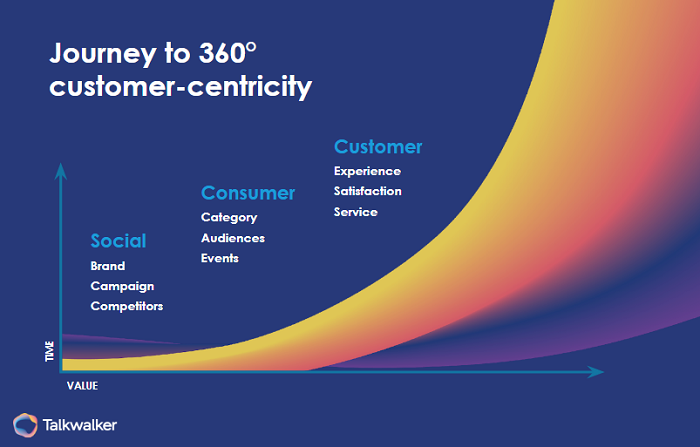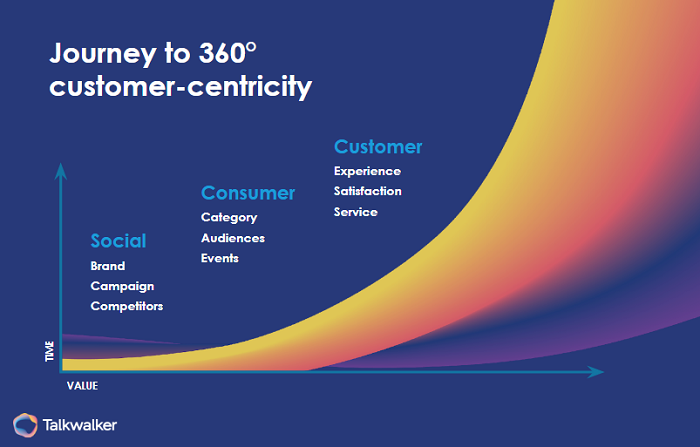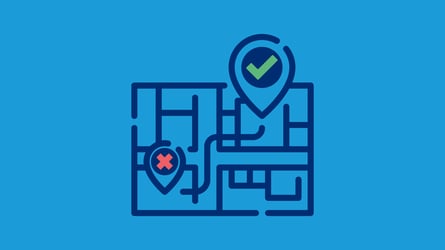Being empathetic to your customers’ needs as an organization gives you a tremendous advantage over the competition. First, you are capable of creating a resilient brand in the face of adversity, particularly as you’d have a community of superfans who are willing to defend you.
Second, you are always one step ahead of market trends and have the ability to anticipate shifts on a whim. Imagine a boardroom with a seat specifically reserved for the consumer, where they’d be actively deciding on key aspects of the business. That’s the power of empathy.
I recently had the opportunity to sit down with Dan Gold from PRCA to talk about the importance of customer-centricity and how data could empower all aspects of the business. Below is a transcript of our conversation or if you’d like to listen to it you can go ahead here below.
Disclaimer: The transcript has been slightly edited for clarity and length.
Dan: I don't know if you’ve ever felt this, but sometimes you’re on a call and you just want to hop on a plane to that location. Well today was one of those days. Hello, my name is Dan Gold, welcome to Fuse, the 15-minute podcast for those who work in communications, public relations, and marketing.
Did you know that there is another fabulous podcast from PRCA to check out? ‘Disability at the Table’ is a podcast hosted by Mark Webb that celebrates disability in the workplace. Once a month you'll hear stories of best practices, inclusiveness and allyship in the PR and creative industries. The podcast is presented by PRCA’s equity and inclusion Advisory Council
And now on to our featured interview today I have Rami Deeb with us from Talkwalker, he’s speaking to us live from Luxembourg, one of my favorite places on the planet. Rami, welcome to Fuse.
Rami: Thank you Dan, it’s a pleasure to be with you and I’d love to welcome you here sometime if you ever visit Luxembourg. The weather is a bit crazy but I'm sure you’ll love it.
Dan: For anyone who hasn't made the journey to Luxembourg, and some people might go ‘why would you go there?’ There is culturally so much history, the Bock Casemates, the bar scene is very cool, the art galleries, just everything is just so beautifully cool, and there's one of my favorite Mexican restaurants down in the center of town as well.
So, we’re talking about being customer-centric. When this came across my desk, I was very intrigued about this because as someone who's been in communications since the 90s, I've always looked at it from the point of view of: ‘Understand your audience; understand the need within your audience.’
Maybe this is because I have a broadcast background, but unless you scratch the itch and address their needs, they're not going to be interested, they're not going to care. Is there a sense that maybe people lost their way, and they were just pushing lots of material as we got into this digital world and we maybe need to rebalance it back? What are the needs of the audience and how do we know what their needs are?
Rami: First of all, thanks for giving a bit of a historic context telling me about your background in communications. You touched upon the subject, but not quite.
In the early noughties companies and startups were mostly focused on being product-driven, so they were trying to develop a lot of cool tech, ride the wave of the world-wide-web, or build new solutions on top of these technologies.
Moving forward, with more data being available, these companies shifted towards being more data-driven.
So you start seeing a lot of these companies adopting a data-first mindset where they’re just following the data blindly; adapting their strategies accordingly. That strategy worked for a while, whether to acquire new customers, assess the competition, gauge the market, or perform due diligence. However, nowadays we have a new contract with the customer.
Brands need to rethink their ‘social contract’ with their consumer base. The consumer now has more authority and a different set of expectations from brands. This momentum has been building up even before COVID hit.
When we talk about customer-centricity, it all goes back to empathy. It’s all about putting yourself in your [customer’s] shoes. The sooner you realize that, the better, and the more sustainable you become.
Consumer intelligence prepares you for success, see for yourself
We’re not thinking of short-term wins, but long-term ones. You have brand loyalty, brand love which we have recently published a report about, you have people becoming much more trusting towards the brand. Trust and transparency go a long way.
You don’t want someone just to buy from you once and then forget all about you. You want someone to advocate on your behalf, to become your brand ambassador.
Going back to the point of empathy, being empathic with your customer is defined by really understanding them. Not just looking at their purchasing or browsing behavior but getting intelligence on them.
So move away from novelty metrics to a holistic intelligence framework, whether through social listening, market research, competitive analysis, reviews, how they’re interacting with your brand, or if they have any concerns. I’m not only talking about doing the new stuff, but also going back to the classical way of understanding the customer through focus groups and such.
People tend to forget that these channels provide you with direct unfiltered insights, and once you have all this data fed into artificial intelligence it becomes crucial to design the experience around the customer.
Customer-centricity does not only affect your marketing or communications [strategy], it reaches all touchpoints within a business, for example, product development. When you talk to someone who’s working all day in quality assurance or product development they tell you that ‘the product works’, however they don’t know if it works for the customer. That is a critical detail that is sometimes forgotten in day-to-day business.
[Customer centricity] affects all aspects of a business: Customer support, business development, or sales – you see salespeople adapting their pitches, but they don’t particularly know how the consumer might use the product on a daily basis.
That feedback cycle is ongoing and constantly shifting. Once you have these feedback frameworks going, it’s like you’re involving the customer in every decision being made in the company. If you’re working in media, for example, it could be as simple as asking your audience to choose the cover for this month’s edition.
A global coffee chain did that brilliantly and I always like to give that example. What they did is they gave the customer their time back. By connecting their mobile app to their loyalty program, customers can get their customized drink always on time and on the go. I think you know who I’m referring to.
This is a micro-decision that’s driven by the consumer, believe it or not. It even goes to multibillion-dollar industries like airlines or automotive. You’d assume that those industries would solely rely on input from engineers or designers in Germany, US, or Japan – whereas they’re being driven by the consumers. This is where we’re going in the next few years.
Establishing a 360° customer-centricity organization maximizes revenue and leads to more satisfied customers
Dan: Where do we look at in terms of data points and how do we gather it?
Rami: In today’s real-time economy, time is money.
You no longer have the luxury of going on a one-on-one basis with your end-consumer. You need to have a solution that gives you real-time access to real-time feedback and ongoing conversations that are happening across all platforms and languages.
What we’ve done is scale up your [consumer intelligence] framework through artificial intelligence and real-time data. You no longer have to sit at your computer all day. You can automate all these processes to fully understand the [customer] sentiment.
One thing that happens in the digital arena is that nuances get lost in the language. So when people talk about, for example, memes, they may be celebrating your product or [might be criticizing it]. You know how the internet works.
This is the type of intelligence that you should be looking for when you’re launching a new product.
Add that to the fact that you can share those insights across your entire organization; breaking down those data silos. Here I’m referring to the example you mentioned [off-air] about how you, as an IT person, were doing it alone. Though, imagine what would happen if the product development team knew about that feedback.
It’s about democratizing data, getting real-time accurate data that can be automated.
I hope this answers your question, because I feel like people are still reluctant to fully embrace that shift. It’s almost like moving away from being a data scientist and more towards being a psychologist. You’re prioritizing first party data, you’re looking at a very privacy-conscious audience, people who are very intelligent.
Learn how consumer intelligence supercharges your business
You no longer can look at your consumers as a monolith, they’re very much complex, they have different needs, they have very specific [expectations], and they know what they want.
You see numerous SaaS companies making assumptions on whether a feature is good or bad for the consumer – you cannot make those assumptions at scale without data.
Moving forward, I predict that we’ll be seeing more Chief Customer Officers (CCOs), I could really see it going there.
At the end of the day, it all goes back to what type of brand image you want to portray to your consumers. I’ve recently published an article about brand image, looking at Allbirds, the sustainable and environmentally friendly footwear company.
If you compare their American website to the Japanese one, you realize that the former pushes the message of being eco-friendly and carbon-neutral, however the latter positions itself as a young and hip brand (rather than focusing on their environmental credentials). Obviously, there’s local knowledge [of the market], however, these nuances go through numerous feedback cycles with the end consumer.
Learning more about how the product is being consumed and who buys the product, and therefore you can adjust accordingly. You need to know what you want to test and localize – it’s a learning curve.
Going back to the idea of being a psychologist, it’s never a constant. For example, you might have a website that’s developed for the German market, but different age groups have different landing pages tailored to their interests. This is one simple way of personalizing the customer experience.
It’s about testing the ground and continuously adapting; you can’t remain static. Customer-centricity is a living thing that keeps growing with customers.
Dan: Time is not always our friend and I’ll be fair and say it isn’t today specifically, on this one Rami. Before you leave us, firstly I’d like people to know where they could get in touch with you and secondly would be to ask for your 30-second elevator pitch of the branding that you have behind you. Tell us about Talkwalker.
Rami: Talkwalker is an industry-leading consumer intelligence platform. We’ve been empowering over 2500 brands globally to put the customer at the center of their operations. We have offices all over: Frankfurt, Singapore, San Francisco, London, Milan, Paris, and New York, as well as our headquarters in Luxembourg. We take great pride in our AI-powered solutions and we look forward to hearing from you.
If you want to send me an email at r.deeb@talkwalker.com then feel free to do so, or if you want to request a free demo of the platform head over to talkwalker.com and one of our team members would be happy to support you.
Dan: I wish you the very best. I hope that Luxembourg is as grand and beautiful as it has ever been. By the way, I’m not going to do a piece for Luxembourg tourism but, everybody, seriously regardless of where you’re watching or listening to this in the world – if there’s one place that you need to go, it’s Luxembourg. It’s truly beautiful and truly fascinating.
Rami, thank you so much for joining us here on Fuse.
Rami: Thank you so much for having me, it has been a pleasure.





